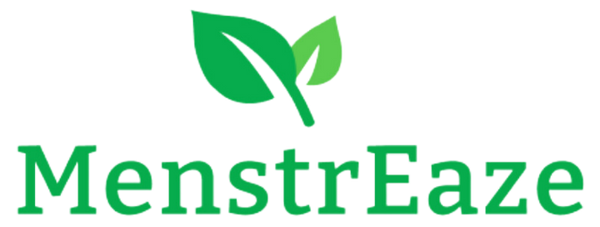Research Publications on Iron for Menstrual Health
This collection of research highlights the significant benefits of iron supplementation in nonanemic menstruating women with low ferritin, showing reduced fatigue and improved iron status without notable changes in quality of life or mood disorders. Additionally, an association between iron depletion, menstruation, and dietary habits in adolescent girls suggests a critical need for targeted nutritional strategies to mitigate iron deficiency risks.
Effect of iron supplementation on fatigue in nonanemic menstruating women with low ferritin: a randomized controlled trial; Canadian Medical Association Journal, 2012; Link
This multicenter, parallel, randomized controlled trial investigated the impact of oral iron therapy on fatigue, quality of life, and certain blood markers in nonanemic iron-deficient women with unexplained fatigue. Conducted across 44 primary care practices in France from March to July 2006, the study involved 198 women aged 18-53 years, who were not anemic but exhibited ferritin levels below 50 μg/L and hemoglobin levels above 12.0 g/dL. Participants were randomly assigned to receive either 80 mg of elemental iron daily (n=102) or a placebo (n=96) for 12 weeks. The primary outcome was the change in fatigue, measured by the Current and Past Psychological Scale. Results indicated a significant reduction in fatigue scores by 47.7% in the iron group compared to 28.8% in the placebo group, with no significant changes in quality of life, depression, or anxiety levels. Iron supplementation led to significant increases in hemoglobin and ferritin levels and a decrease in soluble transferrin receptor levels at 12 weeks. This suggests that iron supplementation can be beneficial for nonanemic menstruating women with ferritin levels below 50 μg/L experiencing unexplained fatigue, with recommendations to assess treatment efficacy through blood markers after six weeks.
Daily iron supplementation for improving anaemia, iron status and health in menstruating women; Cochrane Database of Systematic Reviews, 2016; Link
This systematic review and meta-analysis aimed to assess the effects of daily iron supplementation on anaemia, iron status, and various health aspects in menstruating women. The comprehensive search across multiple databases and digital thesis repositories in November 2015 resulted in the inclusion of 67 trials, encompassing 8506 women. The findings indicate that iron supplementation significantly reduces the risk of anaemia and iron deficiency, and increases haemoglobin concentration compared to control groups. However, the review also highlights the increased risk of gastrointestinal side effects, including loose stools/diarrhoea and constipation, associated with iron supplementation. Despite these side effects, iron supplementation did not significantly impact adherence rates. The evidence on the improvement of cognitive function was inconclusive, though supplementation did improve exercise performance and reduce fatigue. Overall, daily iron supplementation is effective in reducing anaemia and iron deficiency, enhancing haemoglobin levels and exercise performance, and mitigating fatigue in menstruating women, albeit with an increased risk of gastrointestinal symptoms.
Iron requirements in menstruating women; The American Journal of Clinical Nutrition, 1991; Link
This study recalculates the daily iron requirements for adult and teenage menstruating women, incorporating variations in menstrual blood losses, hemoglobin levels, basal iron losses, and growth requirements for teenagers. The revised daily iron needs are estimated at 2.84 mg for adult women and 3.21 mg for teenagers, reflecting the 95th percentiles for these groups. To determine dietary iron requirements based on these absorbed iron needs, six assessments of whole-diet iron bioavailability were conducted, considering diets from Sweden, France, and the US. These estimations suggest a dietary iron bioavailability ranging from 14% to 16.6%, with a standardized figure of 15% being proposed for the bioavailability of iron in a typical Western diet. Consequently, the dietary iron requirements to meet the 95th percentiles for absorbed iron are set at 18.9 mg per day for adult menstruating women and 21.4 mg per day for menstruating teenagers, assuming no existing iron stores.
Association of Iron Depletion with Menstruation and Dietary Intake Indices in Pubertal Girls: The Healthy Growth Study; BioMed Research International 2013; Link
This study explored the relationship between iron depletion (ID), menstrual blood loss, and lifestyle factors, including diet and physical activity, among 1222 girls aged 9–13 years. It found that 33.5% of adolescent girls with menses were iron depleted (serum ferritin < 12 μg/L), compared to 15.9% of girls without menses. Iron-depleted girls without menses consumed less poultry but more fruits and fast food than their non-iron-depleted counterparts. Multivariate logistic regression analysis revealed that girls with menses were significantly more likely to be iron depleted, with menstruation being a key factor increasing the risk of ID. Additionally, ID was associated with dietary habits, such as high calcium intake, frequent fast food consumption, and low poultry and fruit intake. The study underscores the need for further research to better understand the impact of diet and menstruation on iron status in pubertal girls, highlighting the importance of addressing nutritional needs and menstrual blood loss in this vulnerable group.


